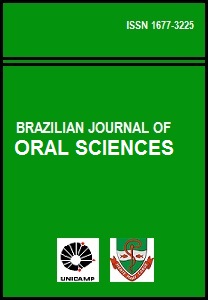Abstract
Aim: This ex vivo study compared, under scanning electron microscopy (SEM), the marginal adaptation of root canal obturation with either ResilonTM or gutta-percha cones following root-end resection. Methods: Thirty human single-rooted teeth with fully formed apices were collected and decoronated. The root canals were instrumented up to a size 45 taper .04 and obturated with laterally condensed gutta-percha (Group 1; n=15) or ResilonTM (Group 2; n=15). AH Plus sealer was used in both groups. After 48-h storage in saline, the apical 3 mm of each root were resected with a water-cooled high-speed plain fissure #170L carbide bur. Epoxy resin replicas of the resected root ends were examined by SEM. The total area of apical gap in each replica was measured using UTHSCSA ImageTool software. Data were analyzed statistically by the MannWhitney U-test (α=5%). Results: The mean area of apical gap in groups 1 and 2 was 0.0042 mm2 and 0.0015 mm2 , respectively, with no statistically significant difference (P = 0.83). Conclusions: The type of material did not influence at the apical adaptation of root canal obturation after apicoectomy, and the misfit may be related to anatomic factors.The Brazilian Journal of Oral Sciences uses the Creative Commons license (CC), thus preserving the integrity of the articles in an open access environment.
Downloads
Download data is not yet available.

